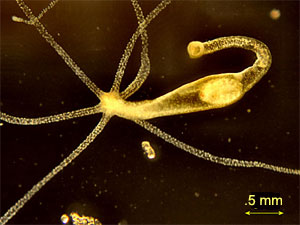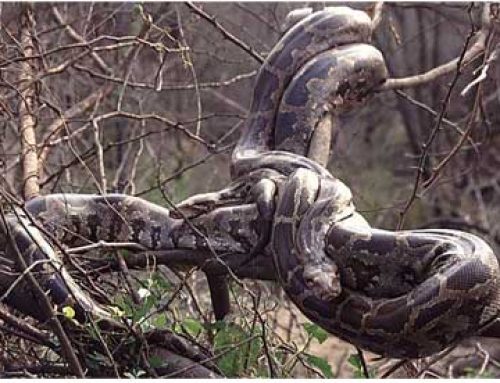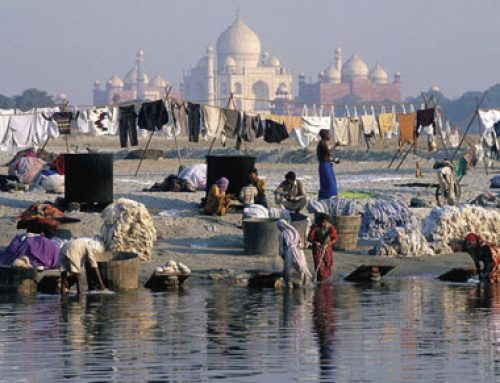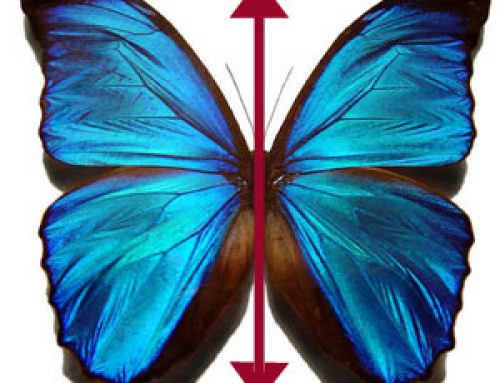
Hydra evolution: a hydra budding new hydras
Before the hydra
For almost three billion years, the only living things on earth were one-celled creatures, either prokaryotes or eukaryotes.
What’s a prokaryote?
And a eukaryote?
All our biology articles
Early multi-cellular creatures
Even today, the vast majority of the living things on earth are one-celled creatures – microbes. But about 600 million years ago, a few one-celled creatures began to group together and cooperate to make multi-celled creatures. The first ones were probably sponges, and then hydra are the next earliest and simplest creatures with more than one cell.
The Proterozoic Era
What are sponges?
A hydra eating a water flea
Two cells thick
One problem that any multi-celled creature has to solve is how to get food to all of the cells. All of the hydras lived in the water, like all other living things at this time. So the food normally just floated by and the cell pulled it inside through its lipid membrane. If you made a long chain of cells, each cell could still touch water and get food. A flat surface two cells thick also would work, or a cylinder of cells two cells thick.
Circulatory system
Lipid membranes

A hydra eating: the mouth is where all the tentacles come together,near the center of the picture.The hydra is eating the round bug in its stomach.
Specialized cells
A hydra is not much more complicated than that – it’s a cylinder of cells two cells thick. The cells are specialized so that the inside cells know to go on the inside and the outside cells know to go on the outside.
Nerve net
Between them, there is a nerve net that is a sort of jelly, not made of cells. The cells in the tentacles can pull food towards the hydra, sting it, and stuff the food down inside the tube to be digested.
Nervous systems
Digestive systems
How do hydra reproduce?
You can see something being digested inside this hydra here. The cells aren’t very strongly held together. If you cut a hydra into pieces, as long as a piece has some of each kind of cell, that piece will reproduce more cells and rebuild itself into a whole new hydra.
What is mitosis?
More about reproduction
Hydra can reproduce themselves by making another, smaller hydra. They do this by gradually growing a little hydra out of their side, using mitosis. You can see one nearly formed on the green hydra at the top of this page. When hydras bud themselves, they’re reproducing using mitosis.
What is meiosis?
But hydras, like some single-celled eukaryotes, can also reproduce using meiosis. Ordinarily hydras are neither male nor female, but when they are going to reproduce using meiosis, one hydra grows testes to make sperm cells and the other hydra grows ovaries to make egg cells. These sperm and egg cells can fuse to begin a new hydra. This has the advantage of giving the new baby hydra a different combination of DNA than either of its parents have, allowing rapid hydra evolution to respond to changes around them.
DNA and hydra evolution
Some kinds of hydra, for instance, have evolved a relationship with one-celled prokaryotes that can photosynthesize food for them. The hydras let these algae live inside them and the algae eat what the hydra doesn’t want (carbon dioxide) and spit out what the hydra does want (oxygen to help digest food). The green hydra at the top of the page is one of these.
What is photosynthesis?
A photosynthesis project
(Hydras got their names from the Greek myth about Herakles and the Hydra.)




